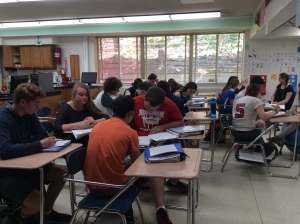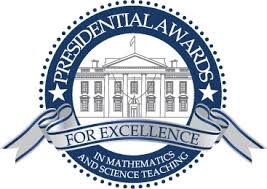 Looking back on my high school classes I remembered the classes where I was engaged as an active student. The classes where the activities were hands on and I wasn’t just jotting notes. Where conversations about the content naturally grew and I could make connections between the content and my life.
Looking back on my high school classes I remembered the classes where I was engaged as an active student. The classes where the activities were hands on and I wasn’t just jotting notes. Where conversations about the content naturally grew and I could make connections between the content and my life.
When I chose to be an educator, I vowed to make sure my classes were somewhere that I would have enjoyed being in. Teaching chemistry, this wasn’t easy. There are millions of power-points on various topics but in 2005 there were few other resources that I could get my hands on. And so I searched. I knew, in the first few minutes of the POGIL workshop, that this method would be appropriate and effective with my students.
The method, process oriented guided inquiry learning (POGIL), uses cooperative groups to work through learning cycle activities. The activities have models with strategically developed explore, concept development and application questions for groups to work together on. Upon trying one the next year in my class the bustle of student voice, high level of engagement, general level of energy and student comments told me that this was the way to go. My students would be OK with this pedagogy. I needed to integrate more of this style of lesson. The written activities in 2006 were for college level. I began to modify those in existence and/or write my own.
The benefit to not having a continuous flow of activities actually helped me assess their value. The days after my students did POGIL’s vs. other types of learning they:
-stated the class period went quickly
-had less problems or issues understanding the material the next day and even the next week
-demonstrated better long-term retention on summative assessments
The results facilitated my ‘momentous shift’ in creating the classes I teach today. Fortunately my first few years adopting the high school POGIL initiative was created and I was accepted to become apart of it. Through the initiative four books of classroom tested materials AP Biology, AP Chemistry, Biology, Chemistry were published. Those were followed by an AP Chemistry lab manual that was developed in collaboration with PASCO.
Utilizing the POGIL activities I noticed the students were developing a strong interest in the material. They began asking questions that I wasn’t yet equipped to explain. The students began driving the pace the class was going. They thrived with content and shared an abundance of ideas helping to guide me on what to do next.
I now integrate POGIL activities using a variety of models ranging from online simulations to lab results. It isn’t the same thing every day. Everyday activities run and flow differently based on the students and topics. While I have integrated other strategies this remains a cornerstone of my practice.





Leave a comment